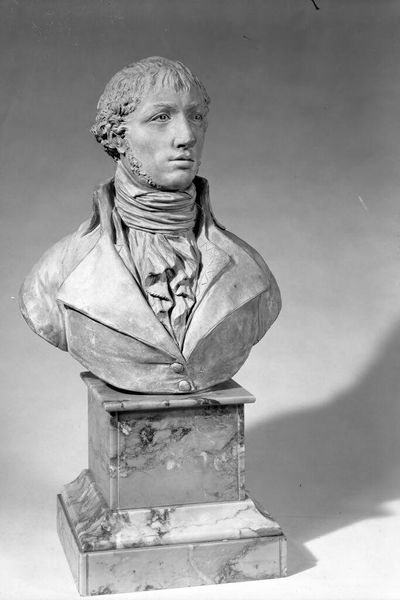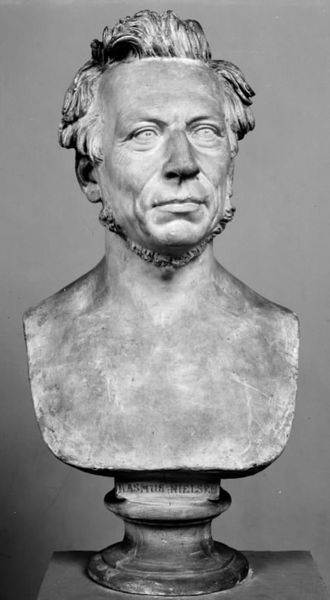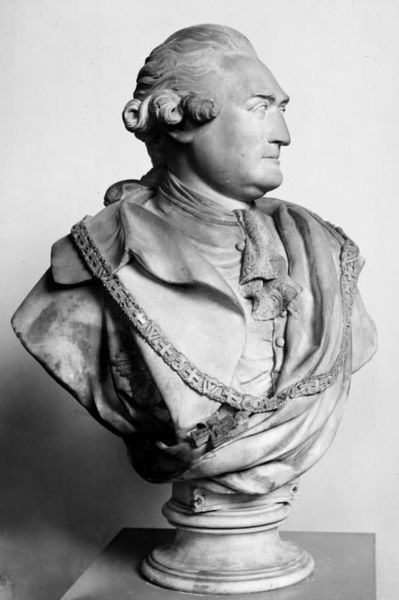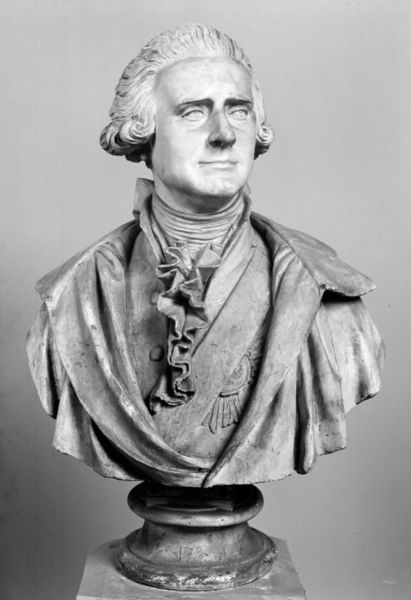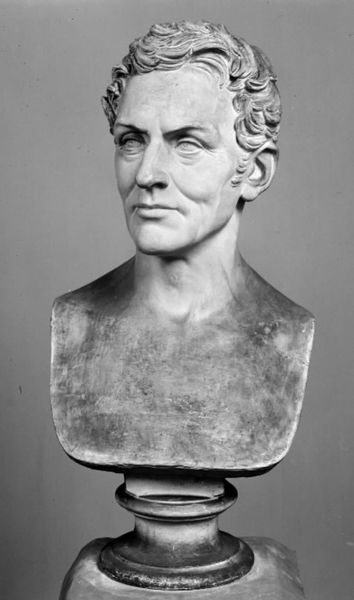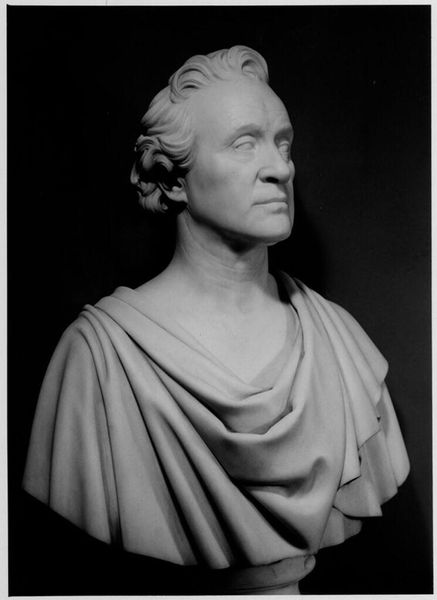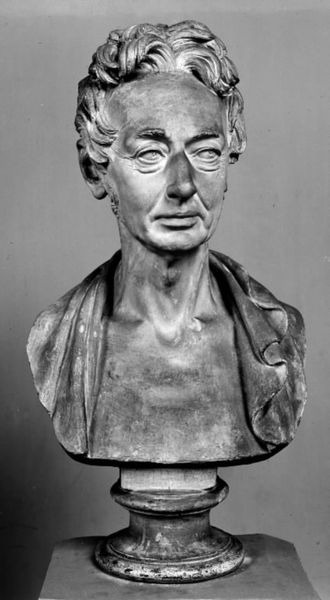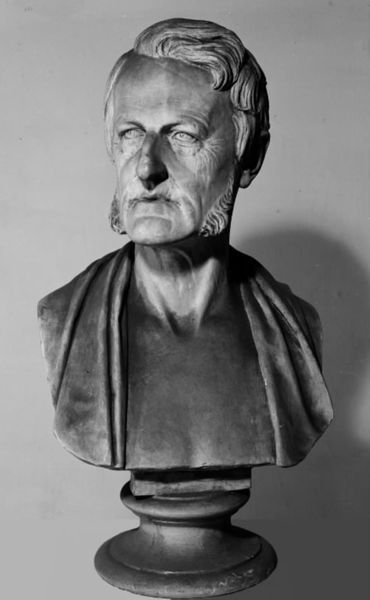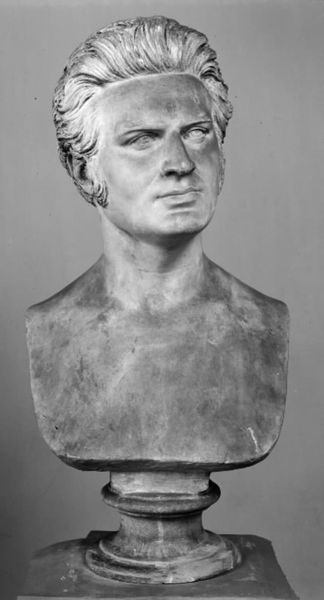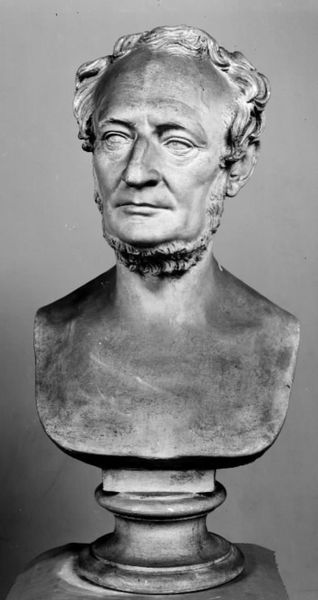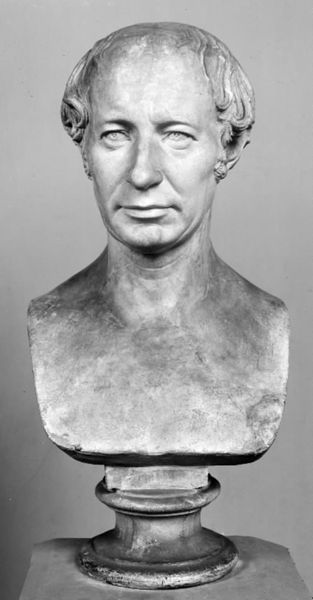
Dimensions: 69.5 cm (height) (Netto)
Curator: Before us stands W. Runeberg's 1901 marble bust, "Portræt af fru Camilla Bentzen", currently residing at the SMK – Statens Museum for Kunst. Editor: My first impression is of austere elegance. The smoothness of the marble and the subject’s restrained expression give a sense of formidable composure. Curator: The formal clarity and the emphasis on idealized features strongly align this work with neoclassical ideals, despite being created at the turn of the century. Notice the delicate carving around the lace collar, a masterful demonstration of skill. Editor: Absolutely, the execution is meticulous. I’m drawn to consider the labor involved in carving marble to achieve such nuanced textures—the contrast between the polished skin and the more roughly worked fabric of her attire. The materiality of this piece speaks to a culture that values refinement but also skilled craft. Who was Camilla Bentzen and how did Runeberg's commission come about? Curator: While specific biographical details regarding Camilla Bentzen are scarce, such portrait busts were typically commissioned by wealthy families to immortalize their loved ones, embedding them within a visual culture of status and legacy. This practice of patronage shapes not just the creation of the artwork, but its very essence. The social standing of the patron and subject informed the materials used and techniques employed. Editor: Indeed, and we shouldn’t ignore the symbolic weight of marble itself. Historically it denotes permanence, purity, and prestige. How were these sculptures made? Did the artists work in a workshop, a studio? Who were their assistants? Curator: The artist would often make preparatory sketches and plaster models. Assistants were commonly involved in the roughing out stages of the carving, allowing the master sculptor to focus on refining the details and ensuring the likeness. The hierarchy of labor is baked into the artwork itself. Editor: The very creation, and display, were part of constructing identity and solidifying social narratives, turning raw material and labor into an idealized legacy. What a material achievement. Curator: Precisely. It compels us to look beyond the surface beauty and see the deeper interplay of form, material, and social forces at work.
Comments
No comments
Be the first to comment and join the conversation on the ultimate creative platform.
